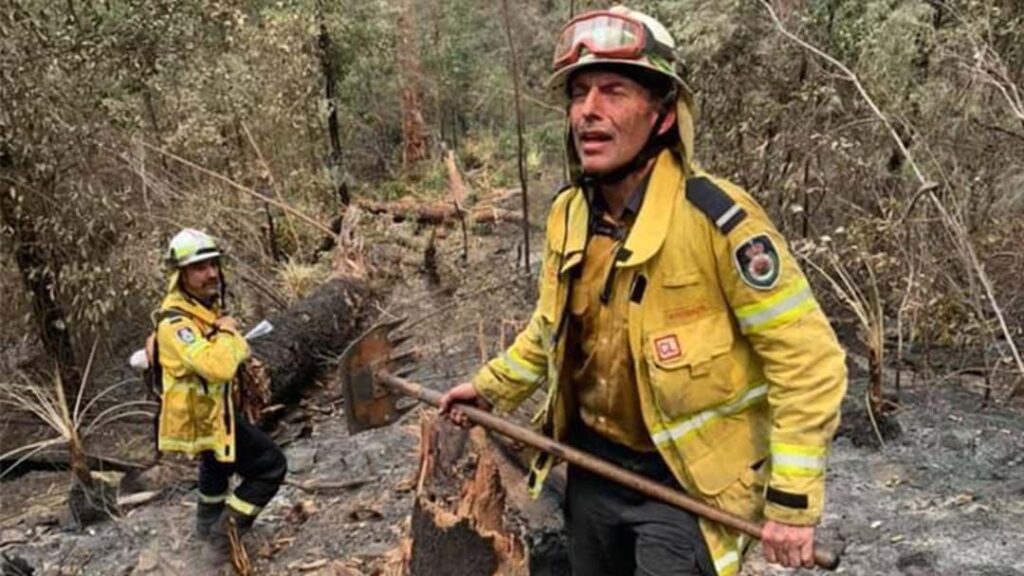Canadian volunteer firefighter Devyn Gale, 19, awoke at dawn on Wednesday, July 12, ready to join her comrades in another battle against the forest fires raging close to her home in Revelstoke in British Columbia.
Devyn was trained and ready for the job; she knew the fires had already burnt 10 million hectares this northern summer, with no end anytime soon.
The plucky teenager pulled on her gear bearing the Northwest Territories Forest Management badge and hurried to the fire’s edge close to the province’s northern border.
Devyn would never return home. Separated from the rest of her team while clearing an area of brush, she was pinned under a falling tree.
Airlifted to hospital, she died the next day.
The loss marked the second wildfire fighter killed in Canada this season in the line of duty.
Devyn’s brother Noland described her as an “amazing sister”.
“She was so kind and thoughtful. She was careful, considerate, hardworking,” he wrote on social media.
“I’m grateful for everything she’s done for me and others, completely out of kindness with no expectation for reciprocation.”
Writing on Twitter, Canadian Prime Minister Justin Trudeau sent his “deepest condolences” to Devyn’s family, friends, and fellow firefighters.
“We must never forget the risks these heroes take every time they run toward the danger,” he said.
This sacrifice again punches home the services volunteer firefighters provide worldwide to protect their forests, families, communities and livelihoods.
Australia knows this all too well.
Unprecedented bushfires have cemented its rural firefighters at the heart of the nation’s identity.
It’s not just that these men and women put themselves in the line of fire.
It’s that these ‘firies’ are almost always volunteers, battling blazes for the sheer love of their local community and the productive forest industry that grows around them.
Relying on volunteers isn’t unique to our rural firefighting brigades. Other countries with large numbers of volunteer firefighters include Canada, the US, Austria, Germany, France, Japan and China.
But Australia relies on these volunteers to an extent unparalleled in the world due to the country’s sheer size and the extent to which it is exposed to bushfires.
Australia’s 195,000 volunteers, with six state and two territory bushfire services, were heralded on the front page of Time Magazine in 2020 as ‘Heroes of the Year’.
But it’s not always the low-profile volunteers who we see at the core of those responding to disaster.
Former Prime Minister Tony Abbot was a volunteer with the Davidson Brigade of the NSW Rural Fire Service in September 2019, which deployed to the NSW north coast before finding itself near Tenterfield.
At the time, local MP Barnaby Joyce paid tribute to his former coalition party room colleague in parliament who had sought no media coverage.
“What we are encountering in regional areas is the most exceptional drought in Australia’s written history,” Joyce said.
“I would like to comment on a person who is currently fighting bushfires in these dire circumstances, and that is the former prime minister of Australia, Tony Abbott, who, as we speak, is at Drake fighting a bushfire in my electorate.”
In a 2020 video, Abbot can also be seen wearing a breathing device and an oxygen tank in 45-degree Celcius heat as he fought a fire that engulfed a home in Bendalong on the NSW south coast.

Barnaby Joyce pointed to three major “issues” that needed to be addressed – access to the fires, central watering points and a lack of hazard reduction burns.
The latter he blamed largely on current conservation laws.
It would be a tragedy piled on tragedy if, after all that, we don’t dismiss the Greens’ argument that our highly flammable bush will be OK by just “locking up and leaving it”.
Of more than 132 million hectares of native forest (according to the Australian Bureau of Agricultural Resource Economics), only about 5% is designated for timber harvesting.
This would be a surprise to many citizens – and a lot of politicians.
Over the past 25 years, the net area of forest harvested for timber production has halved due to the expansion and addition of national parks and reserves, many of them unmanaged, with the forest floors gathering tonnes of fuel.
Timber harvesting occurs at the rate of about six trees in 10,000 each year (and every tree harvested is effectively regrown through regeneration).
In fact, Australia’s approach to native forestry is held up as a poster child in many international forums.
Meanwhile, in a late update, the Canadian Interagency Forest Fire Centre has declared the 2023 wildfire season the worst in Canada’s recorded history, surpassing the 1989, 1995, and 2014 fire seasons.
As of July 17, 4193 fires had burned across 10,193,171 hectares, and of the 907 active wildfires, 599 were deemed “out of control”.
The centre says volunteers are also grappling with a growing crisis of physical and mental exhaustion.
And as their roles become more vital in a hotter, more fire-prone country, crew leaders worry their teams are nearing breaking point.






